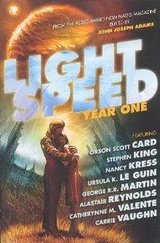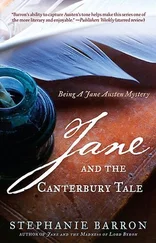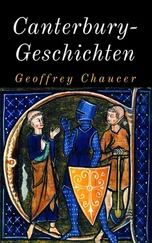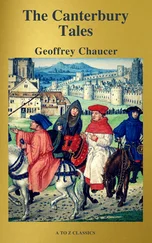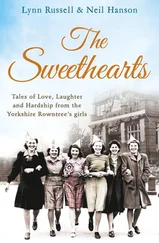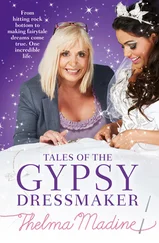'Of his visage children were aferd.' It is quite correct; for 'viság-e' is trisyllabic. Tyrwhitt did not know this, and counted the syllables as two only, neglecting the final e . The line seemed then too short; so he inserted sore before aferd , thus ruining the scansion. Wright follows suit, and inserts sore , though it is not in his MS.; giving no notice at all of what he has done. Bell follows suit, and the word is even preserved in Morris; but the latter prints the word in italics, to shew that it is not in the MS. Nor is it in the Six-text.
I shall not adduce more instances, but shall content myself with saying that, until the publications of the Chaucer Society appeared, no reader had the means of knowing what the best MS. texts were really like. All who have been accustomed to former (complete) editions have necessarily imbibed hundreds of false impressions, and have necessarily accepted numberless theories as to the scansion of lines which they will, in course of due time, be prepared to abandon. In the course of my work, it has been made clear to me that Chaucer's text has been manipulated and sophisticated, frequently in most cunning and plausible ways, to a far greater extent than I could have believed to be possible. This is not a pleasant subject, and I only mention it for the use of scholars. Such variations fortunately seldom affect the sense; but they vitiate the scansion, the grammar, and the etymology in many cases. Of course it will be understood that I am saying no more than I can fully substantiate.
It is absolutely appalling to read such a statement as the following in Bell's edition, vol. i. p. 60. 'All deviations, either from Mr. Wright's edition, or from the original MS., are pointed out in the footnotes for the ultimate satisfaction of the reader.' For the instances in which this is really done are very rare indeed, in spite of the large number of such deviations.
Of Tyrwhitt's text, it is sufficient to remark that it was hardly possible, at that date, for a better text to have been produced. The rules of Middle English grammar had not been formulated, so that we are not surprised to find that he constantly makes the past tense of a weak verb monosyllabic, when it should be dissyllabic, and treats the past participle as dissyllabic, when it should be monosyllabic: which makes wild work with the scansion. It is also to be regretted that he based his text upon the faulty black-letter editions, though he took a great deal of pains in collating them with various MSS.
On the other hand, his literary notes are full of learning and research; and the number of admirable illustrations by which he has efficiently elucidated the text is very great. His reputation as one of the foremost of our literary critics is thoroughly established, and needs no comment.
Mr. Wright's notes are likewise excellent, and resulted from a wide reading. I have also found some most useful hints in the notes to Bell's edition. Of all such sources of information I have been only too glad to avail myself, as is more fully shewn in the succeeding volume.
§ 4. Plan of the Present Edition.
The text of the present edition of the Canterbury Tales is founded upon that of the Ellesmere MS. (E.) It has been collated throughout with that of the other six MSS. published by the Chaucer Society. Of these seven MSS., the Harleian MS. 7334 (Hl.) was printed separately. The other six were printed in the valuable 'Six-text' edition, to which I constantly have occasion to refer, in parallel columns. The six MSS. are: E. (Ellesmere), Hn. (Hengwrt), Cm. (Cambridge, Gg. 4. 27), Cp. (Corpus Coll., Oxford), Pt. (Petworth), and Ln. (Lansdowne). MSS. E. Hn. Cm. represent the earliest type (A) of the text; Hl., a transitional type (B); Cp. and Ln., a still later type (C); and Pt., the latest of all (D), but hardly differing from C.
In using these terms, 'earliest,' &c., I do not refer to the age of the MSS., but to the type of text which they exhibit.
In the list of MSS. given above, Hl. is no. 1; E., Hn., Cm., are nos. 40, 41, and 28; and Cp., Pt., Ln., are nos. 24, 42, and 10 respectively.
Of all the MSS., E. is the best in nearly every respect. It not only gives good lines and good sense, but is also (usually) grammatically accurate and thoroughly well spelt. The publication of it has been a very great boon to all Chaucer students, for which Dr. Furnivall will be ever gratefully remembered. We must not omit, at the same time, to recognise the liberality and generosity of the owner of the MS., who so freely permitted such full use of it to be made; the same remark applies, equally, to the owners of the Hengwrt and the Petworth MSS. The names of the Earl of Ellesmere, Mr. Wm. W. E. Wynne of Peniarth, and Lord Leconfield have deservedly become as 'familiar as household words' to many a student of Chaucer.
This splendid MS. has also the great merit of being complete, requiring no supplement from any other source, except in the few cases where a line or two has been missed. For example, it does not contain A 252 b-c (found in Hn. only); nor A 2681-2 (also not in Hn. or Cm.); nor B 1163-1190 (also not in Hn. or Cm.); nor B 1995 (very rare indeed).
It is slightly imperfect in B 2510, 2514, 2525, 2526, 2623-4, 2746, 2967. It drops B 3147-8, C 103-4, C 297-8 (not in Hn. Cm. Pt.), E 1358-61, G 564-5; and has a few defects in the Parson's Tale in I 190, 273, &c. In the Tale of Melibeus, the French original shews that all the MSS. have lost B 2252-3, 2623-4, which have to be supplied by translation.
None of the seven MSS. have B 4637-4652; these lines are genuine, but were probably meant to be cancelled. They only occur, to my knowledge, in four MSS., nos. 7, 11, 25, and 29; though found also in the old black-letter editions.
On the other hand, E. preserves lines rarely found elsewhere. Such are A 3155-6, 3721-2, F 1455-6, 1493-9; twelve genuine lines, none of which are in Tyrwhitt, and only the first two are in Wright. Observe also the stanza in the footnote to p. 424; with which compare B 3083, on p. 241.
The text of the Ellesmere MS. has only been corrected in cases where careful collation suggests a desirable improvement. Every instance of this character is invariably recorded in the footnotes. Thus, in A 8, the grammar and scansion require half-e, not half; though, curiously enough, this correct form appears in Hl. only, among all the seven MSS. In very difficult cases, other MSS. (besides the seven) have been collated, but I have seldom gained much by it. The chief additional MSS. thus used are Dd.= Cambridge, Dd. 4. 24 (no. 29 above); Slo. or Sl. = Sloane 1685 (no. 8); Roy. or Rl. = Royal 18 C 2 (no. 6); Harl. = Harleian 1758 (see p. 645); Li. or Lich. = Lichfield MS. (no. 35), for the Canon's Yeoman's Tale; and others that are sufficiently indicated.
I have paid especial attention to the suffixes required by Middle-English grammar, to the scansion, and to the pronunciation; and I suppose that this is the first complete edition in which the spelling has been tested by phonetic considerations. With a view to making the spelling a little clearer and more consistent, I have ventured to adopt certain methods which I here explain.
In certain words of variable spelling in E., such as whan or whanne, than or thanne , I have adopted that form which the scansion requires; but the MS. is usually right.
E. usually has hise for his with a plural sb., as in l. 1; I use his always, except in prose. E. has hir, here , for her, their; I use hir only, except at the end of a line.
E. uses the endings -ight or -yght , -inde or -ynde ; I use -ight -inde only; and, in general, I use i to represent short i , and y to represent long i , as in king, wyf . Such is the usual habit of the scribe, but he often changes i into y before m and n , to make his writing clearer; such a precaution is needless in modern printing. Thus, in l. 42, I replace the scribe's bigynne by biginne ; and in l. 78, I replace his pilgrymage by pilgrimage . This makes the text easier to read.
Читать дальше

